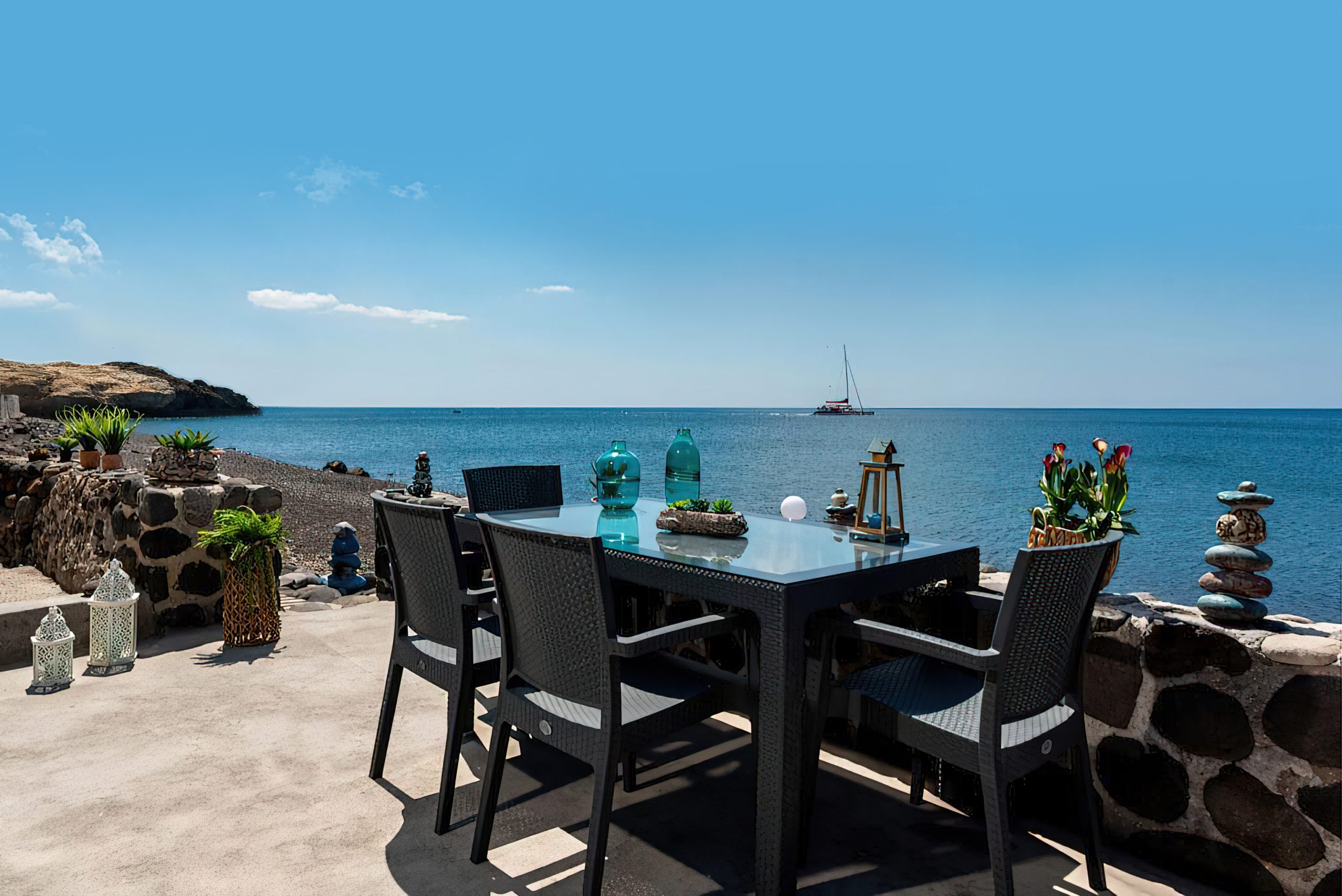The prehistoric settlement of Akrotiri on the island of Santorini (Thíra) is one of the most important archaeological sites in the Aegean Sea and Greece. In prehistory it was a well-connected Minoan port town, with connections to mainland Greece and as far afield as Egypt and Syria. As the town was covered in ash following a volcanic eruption on the island in the 16th century BC, preservation of the settlement is exceptional.
Today the site is covered by a bioclimatic roof and walkways are suspended above the archaeological remains. In some areas paths have been created that allow visitors to walk among the two and three-storey buildings.
History of the Archaeological Site
Although the earliest evidence of habitation dates to the Late Neolithic times (around 6,000 years ago), it was not until the Late Bronze Age (cira 4,000 years ago) that Akrotiri had developed into one of the main urban centers and ports in the Aegean Sea. The extent of the settlement is an estimated 20 hectares, although it has not all been uncovered.
The settlement has a number of notable features: it had an elaborate drainage system, and was made up of sophisticated multi-storey buildings that were decorated with exquisite wall-paintings. The quality and quantity of the furniture and ceramic vessels are evidence of the town’s prosperity. Whereas the numerous imported objects recovered by archaeologists indicate a wide network of communication across the Mediterranean; from Crete and the Dodecanese islands to mainland Greece, from Cyprus to Egypt and Syria.
Sometime between 1620 and 1530 BC the inhabitants of the town were forced to leave after a series of severe earthquakes. There followed a volcanic eruption, the ash of which completely covered the island and the town. These materials, however, have protected up to date the buildings and their contents, just like in Pompeii. The exact date of the eruption is debated, but it is generally accepted that this was the largest volcanic eruption in the last 4,000 years.
Earliest excavations were carried out in 1867, shortly after the site was found during excavation of tephra for construction in the Suez Canal. Modern excavations of the site began in 1967, and it was then that the full extent and significance of the sites was appreciated. Archaeological work continues today, with exciting discoveries still being made.
The frescoes in Akrotiri are especially important for the study of Minoan art because they are so much better preserved than those that were already known from Knossos and other sites on Crete, which have nearly all survived only in small fragments, usually fallen to the ground.
The excavations at Akrotiri have produced a large variety of artifacts revealing numerous varieties of Late Cycladic (LC I) pottery from the area. Pottery is the most common and most enduring commodity in the culture of the majority of ancient societies and, thus, is of great importance to archaeologists in interpreting Ancient Greek societies.
Artefacts from the site are on display in the Archaeological Museum of Thera (Fira) and the National Archaeology Museum (Athens).
The distance between “Serenity Blue Cave House” and Akrotiri Archaeological Site is 5,5 Km.

